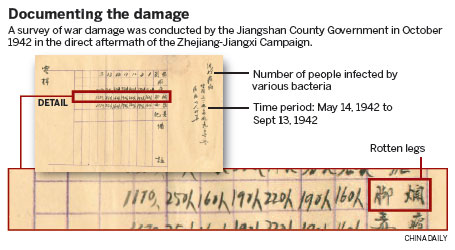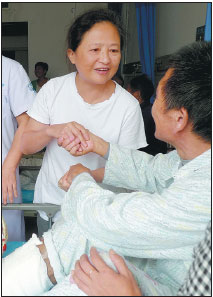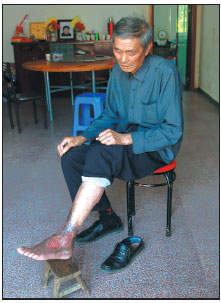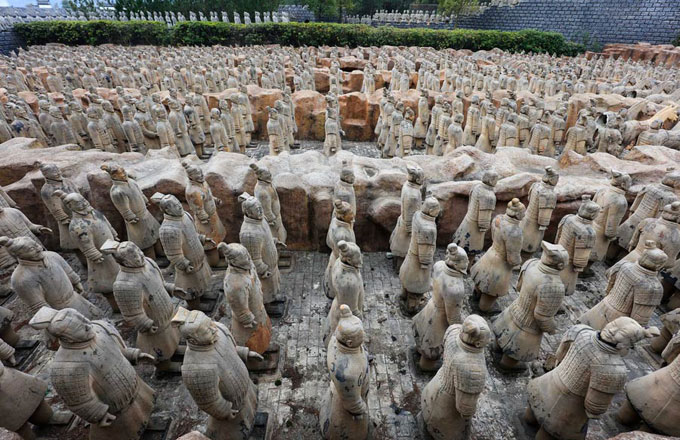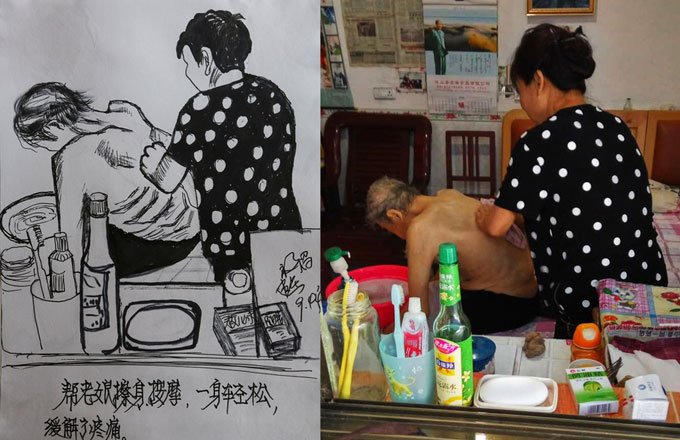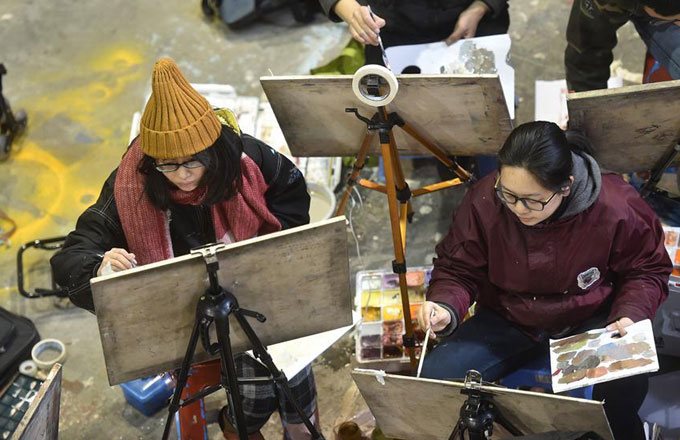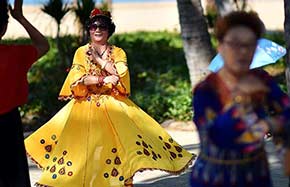'Rotten legs': a lifetime of suffering
Persistent memories
Since the start of the project, Wu has traveled around Quzhou trying to persuade people to visit the hospital. He said his biggest thrill came when he saw two men, both in their 80s, who were having their rotten legs treated. "They were walking towards the door at the end of the hospital's long corridor, arm in arm," said the 54-year-old, whose paternal uncle and aunt died from bubonic plague after an airborne attack by Unit 731's Biological Warfare Unit in 1940.
Dramatic and disastrous, the bubonic plague started in Quzhou, continued to spread across Zhejiang during the war and reached Wang's own village, Chongshan, in Jinhua, in 1942.
About 400 people - one-third of the village's population - was wiped out. "We all share the same surname," Wang said.
After seeing so many rotten legs, she still finds it hard to shake the memory of a man who had lost his legs. "I met him in 1996 in Yushan, Jiangxi, in a village near a wartime air base. He 'walked' up to me with his hands, his body supported by a wooden board. He told me that the whole village had rotted to death and he was the only survivor," she said.
"Once you see that sort of suffering, it's impossible to turn your back on the victims."
|
Wang Xuan visits patients with rotten legs at the Quhua Hospital in April. |
|
Following treatment on his rotten legs, 79yearold Tu Maojiang can finally wear leather shoes. |
